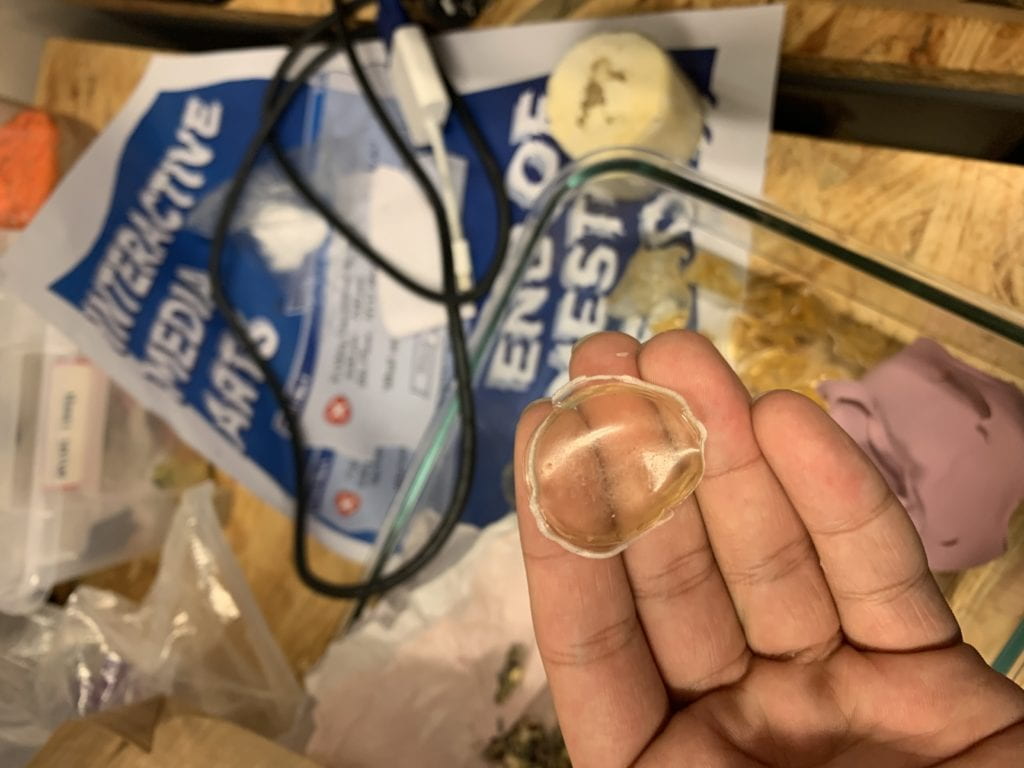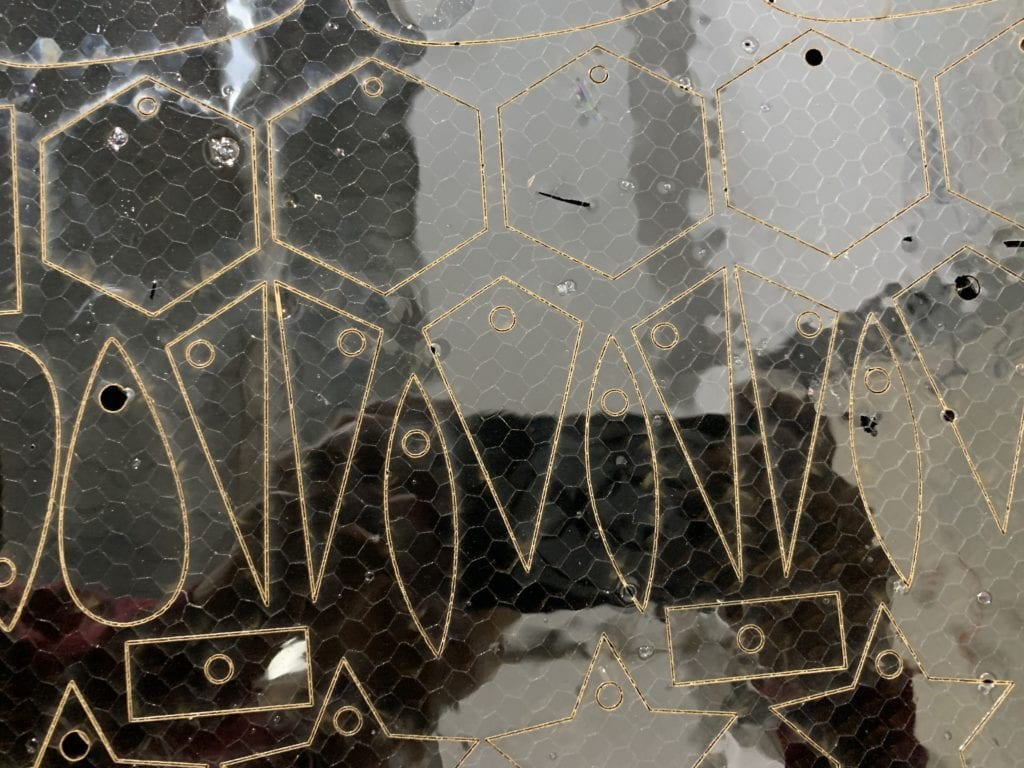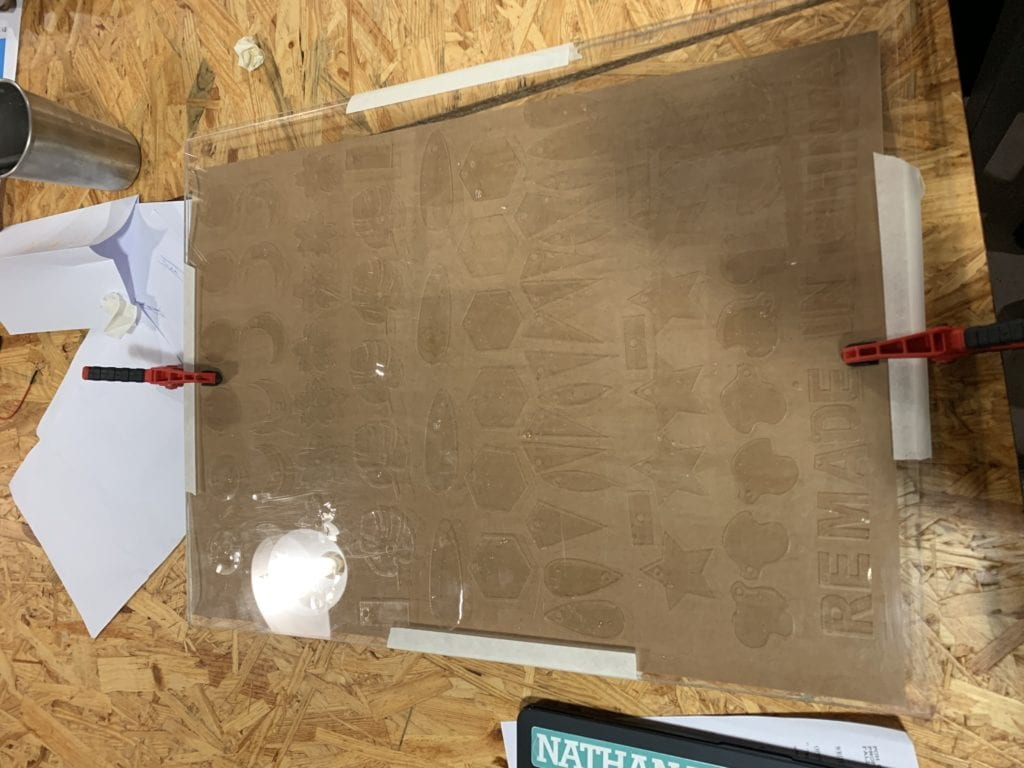Bio-Sequins: A Potential Alternative for Sequins Decoration in the Fashion Industry
Inspiration
My partner Ben is a fashion study student and he shared a great interest to find out a potential alternative for plastic sequins in the fashion industry. As I researched, I find out that sequins are polluting our planet.
“Sequins are a short-term hit with long-term consequences, none of them good,” Dr. Trisia Farrelly, an environmental anthropologist at Massey University in New Zealand, told the MailOnline.” –“How your favourite sequin dresses are actually destroying the planet”
The problem is that all the sequins existing in the current fashion industry are all made of plastic. During the washing and using, those plastic sequins attached or sewed onto clothes may fall down and drain into the ocean, which will make great damage to our environment. As we learned the idea “accumulation” in our weekly reading if sequins are going to keep accumulating, it will be a big issue in the future. Besides, as my partner, Ben shared his knowledge about the fashion industry, those plastic sequins used in the fashion show will be thrown away immediately after the show, which is really fast-fashioned and polluting. Ben and I love fashion and we are all inspired by bioplastic. Hence, we decided to have a test on the potential alternative–bioplastic sequins.


Process
Experiment#1
In the first experiment, we wanted to try out our bioplastic, testing whether it works or not.
Recipe:
- Gelatins: 48g
- Glycerol: 12g
- Coldwater: 250ml
Tools:
- Pan
- Heater
- Spoon
- Spoon scale
- Molds
Experiment Steps:
- Mix gelatins and coldwater
- kept stirring it and gradually it turned to something like jelly.
- The heating process
- turned on the heat
- kept stirring again
- it gradually turned back to liquid. When it completely transformed into a liquid
- pour glycerol into it and kept stirring.
- Pour to mold
- When there were some whitish appearing, pour the liquid into the mold.
- Some changes
- Because the color of this bioplastic is deep, I decide to add more 50ml cold water into the rest of the liquid.
- I kept heating the second test. I want to know what will happen if I add more water.
- Waiting for dry
- I place these three products on the table in 823. They need at least three days to dry out. Let’s wait and see the result.
Photos:
Preparation

Cooking process

Pouring to the mold

Waiting for drying (the left one is the testing one which I add more water)

Result:
The drying process lasted 5 days. Because the mold is too thick, so the drying process is too long. So I decided to take the product out of the mold and cut them into several small pieces. Finally, I got something good:




Successes:
- The recipe works! We got something really similar to plastic but it is purely natural.
- The smaller one is lighter in color than other experiments result. It means that the color of bioplastic can be modified by adjusting the amount of water.
- It is hard enough for laser cutting or other crafts.
Failures:
These products are thick, strong, untransparent plastic and they feel like the hard plastic board, which is the same as my expectation and imagination. But we faced a lot of issues:
- The mold is too thick, it takes too much time for drying and the final product is too hard to used in clothes making.
- The color looks bad
- It should be a flat sheet which is big, thin, soft enough for artmaking.
Follow these feedbacks from the first try, we dig into the next experiment.
Second experiment
Materials:
- Gelatin 150g
- Glycerol 50ml
- Coldwater 750ml
- Flower Buds
- Lavander
Tools:
- Pan
- Heater
- Acrylic boards (2)
- Gram scale
- Spoon
- Measuring bowls
- Stirring stick
- Strainer
Experiment steps:
- sure out wet and dry ingredients and separate via bowls & beakers
- Split the water into 2 equal parts (1 is to be boiled, the other is to be kept in room temperature)
- Create the rose/flower water (dye/fragrance) by boiling water and petals until the desired color is reached
- Strain the liquid and remove all excess petals
- Mix the hot rose water with the room temperature water and add gelatin *before gelatin is added*
- Mix in the gelatin until a thick consistency is reached *try to reach a consistency that has NO clumps/chunks*
- Heat the pot with the mixture until a white foam/bubbles in the mixture begin to form and accumulate (DO NOT BOIL)
- Strain the mixture again or use a spoon to remove the white foam/bubbles
- Pour the mixture onto the flat acrylic sheet *Make sure there are no spots or hols, and try to remove air bubbles if possible (Make sure to lay a protective layer underneath the acrylic – the process is messy and very HOT)
Photos:
The gelatin in the lab had been used out in the first experiment. I got more from Deli life supermarket.

We boiled the flowers to get some color first.



Making process: this time we removed the whitish on the surface, and we got the final product without the white surface as last time.

Pour the liquid to Acrylic boards.


Result:
This time we only used three days to dry out completely. We got the textile which perfectly meets our expectations.

Successes:
- We got a sheet which meets the our expected improvement from the first try: big, thin, soft, transparent.
- We tested it in a laser cutter and it won’t burn. It means that we can use this textile for sequins making.
- Thanks to the flower buds, the final products appear a little bit red. It means that we can modify the color by adding natural color
Failures:
- The materials are too soft. The product from the first try is too hard. We still need to find a medium hardness.
- The materials can be resolved in constant water washing.
Test:
We used the material we got to laser cut. This is the AI file of our laser cut.

We tested the material with Andy, we need to know if it will burn or not.
The thickness is 0.5mm. We got two sheets. We did a plan B, which is we just laser cut one of it and the rest one can be shown if we mess up the laser cutting one.

This is the testing process. We tried to laser cut several rectangles and tested different settings: frequency, power and speed:
And we found the best setting for the laser cut :
Perfect Settings:
Speed – 100%
Power – 27%
Frequency – 30%
“Things to note:
There was ALOT of smoke. Sis, turn the fans ON. Watch out for air bubbles, they were a bit tougher to cut so try and get as much air bubbles out as possible during the pour/drying phase. We also used flowers to organically try and color the dye (it barely worked) but some petals were left in the mixture even after running it through a sieve. The flowers or organic material left in the bioplastic has the risk of burning in the laser cutter, so exercise caution. “
–Citing from Ben’s report
Laser cutting images:



And we got:



Implements
I was asked many times in the IMA show: “How you can apply this thing in practice?”
Here is how I answer from IMA Show:
“We can use this material for sequins making in the fashion industry. For my experiments, I used three bags of gelatin powder and glycerol from the lab. Gelatin powder cost me 30 RMB and we eventually can get two boards of sequins. This is really expensive for the fashion industry. For now, I think it can be used only in some fashion shows and art pieces because people will not consider the cost in these two cases. However, for industrial levels, I still need to have more time for experiments and calculating the cost. But I am still optimistic about it. For my experiments, I used gelatin for food and I bought them from the supermarket. They are absolutely expensive. But if I use industrial gelatin and I bought a lot once time from a gelatin factory, the general cost will go down largely. Also, for future production, we can come up with a method to utilize all the materials to improve the efficiency of using and we can get more sequins from a single try”
The use of bioplastic sequins can be a mature system not only in Shanghai but in the whole fashion industry around the world.
Future improvement
If we have more time, we will try to solve two things: color and dissolving issue.
For coloring, this time we used limited flower buds to color our bioplastic. But as we can see, the color is almost invisible. So if we have more time, we will try to use more color materials to color our bioplastics. Also, we will try different types of color materials. In IMA show, one guest told me that we can try an electric coloring material. That is really interesting.
For the dissolving issue, Ben told me that he brought one piece of bioplastic to shower and it dissolved. But I put my first experiment product into water and test. The result is that it won’t dissolve. So I think the thickness of bioplastic can be a big issue. If we have more time, we will test different thicknesses by using molds in different thicknesses.
Educational meanings
Our project is not aimed at education, but I think it will bring awareness to everyone who buys clothes with sequins. Especially if some fashion companies take our project into consideration and develop a mature sequins making system, they can use the title of bioplastic as a sign for marketing. They will bring the bioplastic products to more consumers, and it will gradually raise the awareness of sustainability among people.
Personal Reflection:
The most valuable thing I’ve learned is that bioplastics can actually be made and used, not just as an environmental concept. In class, I always felt that bioplastics were still only a concept and far from the actual production. However, through my experiments and research, I found that bioplastics could be immediately commercialized and had a profound cultural impact on society. Take my project as an example, as long as the cost is reduced and the product quality is regulated according to customers’ needs, we can see bio-plastics in stores. In addition, from the perspective of the experiment, I think we can learn a lot from the failure and shortcomings of an experiment. These experiences will guide the next experiment and will be the key to its eventual success.
Special thanks to my excellent partner BEN TABLADA and our cuties professor Marcela!

Reference:
https://materiom.org/recipe/22
https://www.glamourmagazine.co.uk/gallery/sequins-damage-environment
Leave a Reply